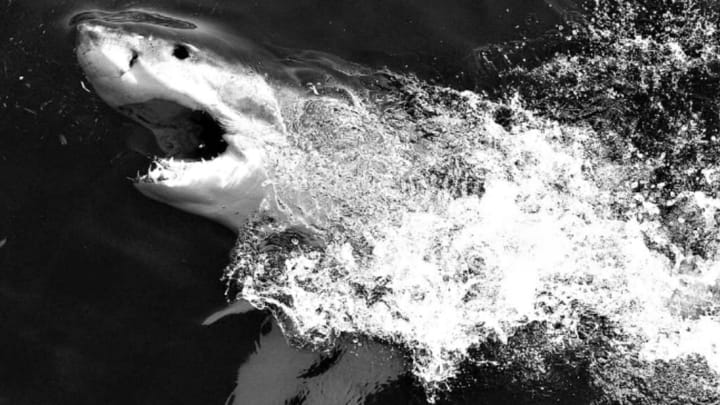In 1891, businessman and millionaire Hermann Oelrichs had some friends over to his seaside home to prove once and for all that sharks were as harmless as kittens. They simply didn’t have the desire for human flesh, he believed, and he jumped into the water with one to prove it. Oelrichs settled a $250 bet with his party stunt—and furthermore, he offered $500 to anyone who could offer proof of a real shark attack.
By the time Oelrichs died in 1906 (liver problems, not sharks), the money had gone unclaimed. Unfortunately, had he lived another 10 years, he would have had to pay up.
The first of the infamous Jersey Shore shark attacks happened on July 1, 1916, when tourist Charles Vansant was bitten in the waters off Beach Haven. Though the shark let go of Vansant after its initial attack, it grabbed him again as men attempted to pull the 25-year-old to shore. Witnesses later swore the shark stayed latched on almost until Vansant was pulled onto the beach. His femoral artery severed, Vansant died at a nearby hotel.
Another attack happened on July 6, 1916 in Spring Lake, New Jersey. At first, when the water turned red, people were confused. One woman believed a man in a red canoe had tipped his boat. When lifeguards got to him, they discovered that both of his legs had been bitten off at the knee [PDF]. The man, later identified as a local bellhop named Charles Bruder, died on the beach before more help could arrive.
Even these horrific deaths weren’t enough to convince everyone that sharks were responsible. The attacks were the work of sea turtles, some theorized, or perhaps a large mackerel. And why would the public be concerned? The Fish Commissioner of Pennsylvania himself, James Meehan, was quoted in the Philadelphia Public Ledger as saying, “I do not believe there is any reason why people should hesitate to go in swimming at the beaches for fear of man-eaters.”
So, people kept swimming—and dying. The following week, it was 11-year-old Lester Stillwell, who was playing in Matawan Creek 16 miles inland. Local businessman Watson Stanley Fisher was trying to bring Stillwell in from the water when he, too, was attacked by the shark. Fisher bled to death hours later at the hospital; Stillwell's body wasn't recovered for several days. Fourteen-year-old Joseph Dunn was also bitten that afternoon, but lived to tell the tale.
The tide of public opinion turned rather quickly. Many of the same people who had been proclaiming sharks as misunderstood less than two weeks before now called for the destruction of the fish. What followed, according to the book Twelve Days of Terror, was "the largest scale animal hunt in history." Hundreds of sharks were killed, including the one believed to be the "Jersey man-eater." The animal was captured by Barnum & Bailey animal trainer Michael Schleisser, who was armed with nothing but a net and an oar. An examination of its stomach revealed at least 15 pounds of human body parts.
On July 14, The New York Times printed what was now painfully clear: “SCIENCE ADMITS ITS ERROR,” the headline read. “No Longer Doubted That Big Fish Attack Men.”
Know of something you think we should cover? Email us at tips@mentalfloss.com.
